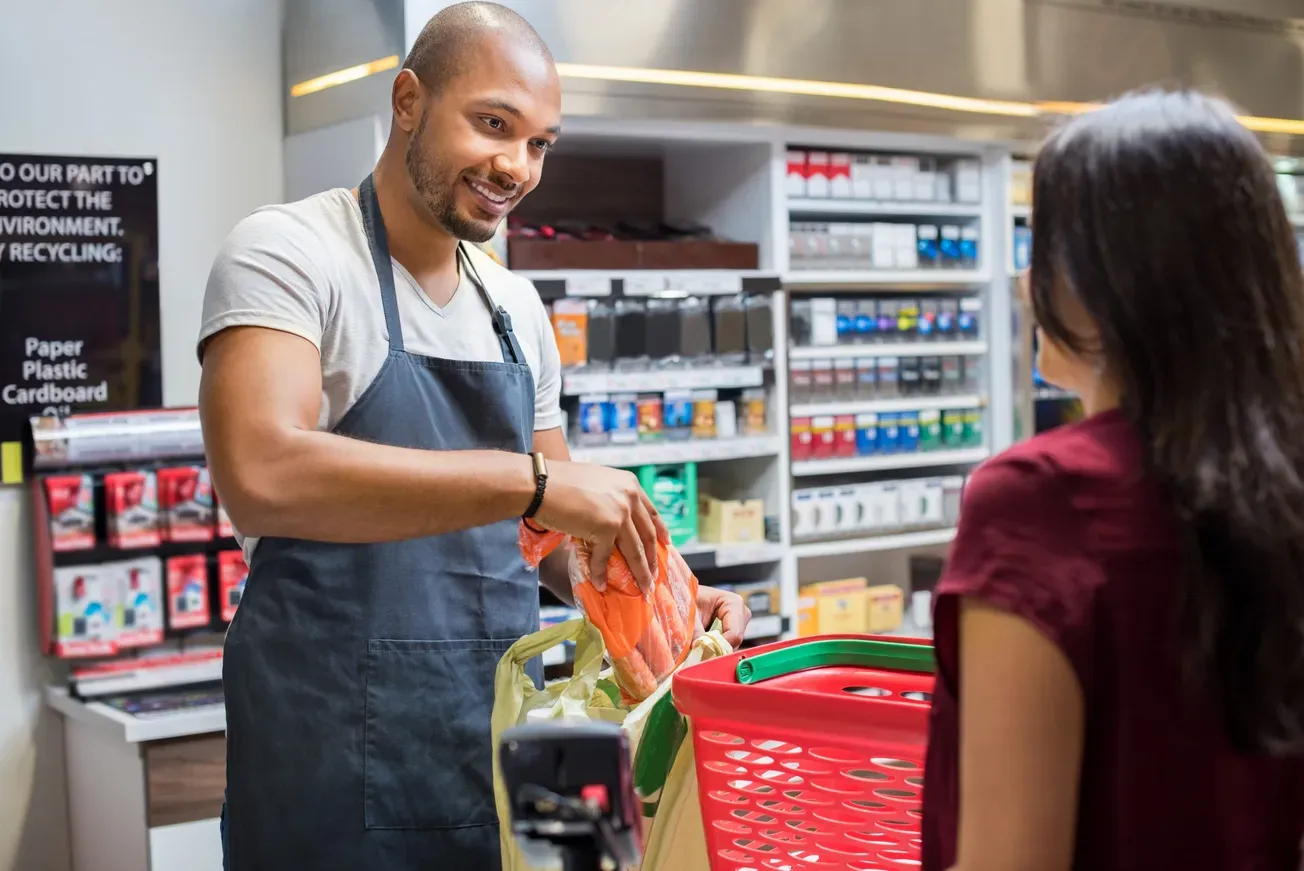ST. LOUIS — The food and agricultural ecosystem has been shaken by the events of the last three-plus years, calling into question many long-held assumptions about how such products get from farm to table. Disruptions in the supply chain and changes in consumption patterns triggered by COVID-19, inflation levels not seen for 40 years and Russia’s invasion of Ukraine are prompting those in the industry to reimagine how they do business.
Asha Lundal, head of professional services firm EY Americas’ Food and Agriculture Consulting Practice, and leader of the company’s Food and Agriculture Innovation Studio, supports that reexamination. With almost 30 years of experience in the food and agriculture sector, she perceives a paradigm shift in the forces shaping the market.
“If you reflect back on the evolution of our food system, early on the demand signals were all driven by producers. What producers produced is what we all went to the store to purchase and what we consumed,” Lundal says. “Over time, that power moved to the center of the value chain, where food manufacturers and processors were really driving the innovation and then sending the signals back to the producers about what was needed, and then, of course, to the consumers about what was available for purchase. Today that role is moving to the consumers. The factors driving their purchases are changing.”
EY’s Future Consumer Index demonstrates that shoppers’ priorities are indeed evolving. Younger people think about the food they eat much differently than members of the generations that preceded them.
“One of the things that the data explicitly shows is baby boomers and Gen Xers typically prioritized affordability, where we now see members of Gen Y and Gen Z valuing more the overall experience and care for the planet,” Lundal explains. “That, combined with the fact that technology is enabling some of the attributes that newer consumers are requesting, is what’s really driving the overall signals back to the food system.
“Tech and social media have given a larger voice to consumers. They now have this idea of wanting accessibility to a lot of information, and the expectation is higher around transparency — what’s in their food, how that food’s produced, and where it’s produced. As a result, stakeholders, not just shareholders, are demanding that food companies and food retailers respond to what customers are requesting. So for your company to have long-term viability or value, you need to start delivering what consumers are telling you they want.”
The new market dynamics mean that participants in the food ecosystem — farmers, CPG suppliers, retailers and transportation companies — need to adapt. The process will involve rethinking the way they operate individually, as well as how they interact with business partners and consumers.
“The current supply chain was built for efficiency, affordability and volume,” says Lundal. “It wasn’t necessarily built for what we call mass personalization, which seems to be the best characterization of what consumers are asking for.
“There’s going to be a broad set of consumers that still want the traditional attributes of food at affordable prices. And to deliver food with the attributes that more and more consumers want — whether it’s healthy for you or healthy for the planet — there is going to be additional cost put into the system. So there’s definitely work to be done in figuring out how best to pivot, how to rebalance the supply chain to deliver the choice that consumers want, and the price points that they can afford.”
The challenge comes at a particularly difficult moment. Food price inflation is high, rising 11.9% in May; the war in Europe is causing shortages of grain, sunflower oil, fertilizer and other key commodities; and climate change and the lingering effects of the pandemic continue to disrupt established practices.
“For decades, there’s never been a question about sufficiency,” Lundal notes, “so the focus has always been on efficiency. But with some of the things that we’ve been experiencing over the last few years, we really need to think about both — efficiency and sufficiency.
“We’ll see more diversification of supply chain networks to cope with sudden disruptions. But there are other consumer-driven factors that are resulting in a shift to more regional and local supply. When consumers demand cleaner, healthier food, and want to understand the ingredients and be able to trace them, it typically goes to shorter ingredient stacks and shorter supply chains as well.”
To deliver against those requirements, supermarket operators and their business partners across the supply chain have to coordinate their efforts more closely than ever, according to Lundal.
“There’s always room to get better at capturing and using data to really understand some of those early signals of how things are going to change in terms of demand,” she says. “Being able to react and respond to that should help us meet the moment for consumers better than we had in the past, as it relates to food safety and efficiency and reliability.
“Enhancing interconnectedness across the supply chain will build on what we’ve been through together in recent years. We stretched a different part of our brain and other muscles to figure out how do we do things differently to be able to react and respond to the unexpected. We also should be able to do a better job in anticipating what is ahead of us.”
The kind of perspicacity and agility that Lundal cites has been apparent during the pandemic. Supermarkets, for instance, adapted quickly to the surge in demand for online shopping and pickup and delivery options.
“Consumers wanted convenience in a different way to access their food,” she notes. “Retailers and restaurants really had to figure out how to pivot to deliver on that. And that created new opportunities. We’re going to see more ghost kitchens, and more ready-to-make, ready-to-eat kinds of offerings in the future.”
The growth in popularity of omnichannel grocery, and the consequent lessening of the supermarket’s function as a neighborhood warehouse for center-store products, is prompting retailers to reassess the shopping experience.
“Retailers have an opportunity to do something different because we have these new generations of purchasers that value that experience, and look at where they shop as being part of their personal brand,” says Lundal. “So, I think still we are going to see our food system reimagined, with a mix of what we call live stores and dark stores.
“Live stores are the place where you get your produce, your meat, those things that you want to touch and feel and select yourself before purchase. Whereas more of your nonperishables will be coming from dark stores, which is really more of distribution center, where you put in an order and it’s delivered to you.”
Lundal and her colleagues are playing a significant part in the industry’s transformation. Founded shortly before COVID struck, EY America’s Food and Agriculture Innovation Studio acts as a think tank for identifying pertinent trends and fostering innovation. The group consists of about 50 organizations representing every aspect of the industry — including retailers and quick-service restaurants, multinational CPG companies and start-ups, and financial and academic institutions.
“Being in the food and agriculture space, and understanding and seeing all of the dynamics and the trends that were happening, it was our view that we could provide value beyond just to our individual clients by creating a platform for the food ecosystem to connect, collaborate, provoke and learn,” explains Lundal. “A lot of players know a lot about the folks they interact with on either side of the value chain to them, but they may not have familiarity if they’re two or more steps down the value chain. The idea was to really focus on reimagining together what the future food system could look like and what those opportunities are for the respective companies.”
The innovation studio has a different theme for each of its monthly meetings, which until recently were held virtually because of the pandemic. Past discussions have centered on such subjects as emerging technologies, the supply chain and sustainability. One recent session addressed obstacles to innovation.
“We asked the executives, ‘What’s your biggest barrier to innovation?’ ” Lundal says, “and culture is what really rose to the top. At the end of the day, culture is critical. Recruiting and retaining the best talent is a big part of that. How do you attract the kind of talent that you’re going to need to take your company to the next level? There’s truth in the adage that what got you here isn’t going to get you to where you need to go next.”





